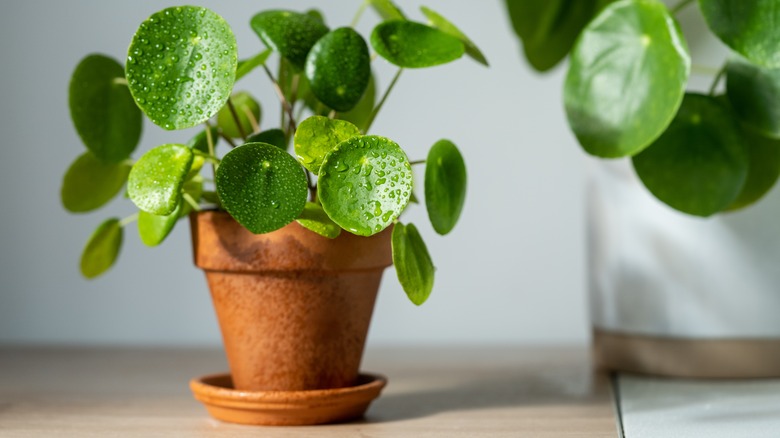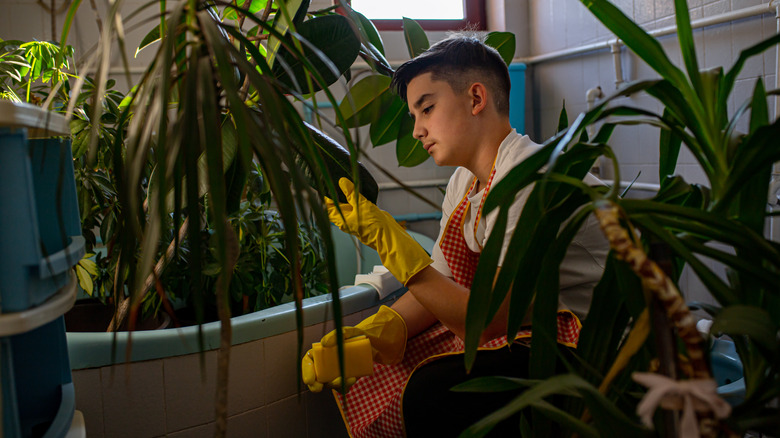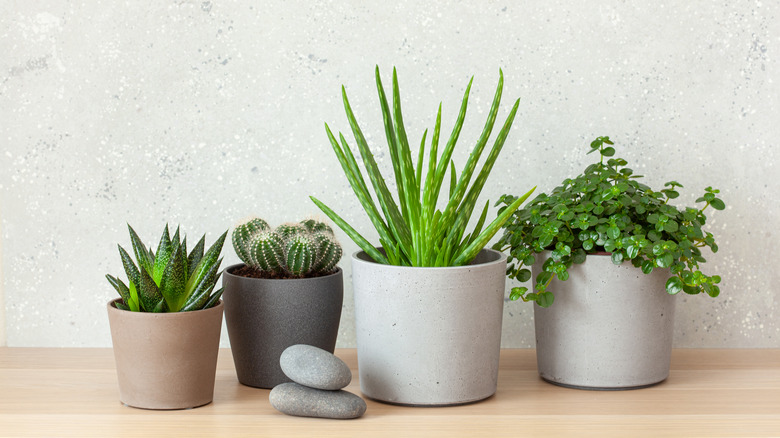Avoid These Indoor Plants To Prevent A Humid Home
Picture this: You walk into your home after a long day, expecting to find solace and comfort. Instead, you're greeted by an invisible but palpable discomfort — the heavy, muggy air that clings to your skin. High humidity in your living space can be incredibly undesirable, bringing with it a host of problems that can turn your sanctuary into an environment that's far from ideal. And you'll be surprised to know that some of your favorite houseplants may be contributing to high humidity at home. The culprits that can elevate humidity levels include jade and spider plants, areca and parlor palms, Boston ferns, rubber plants, English ivy, monsteras, peace lilies, and philodendrons.
While these houseplants are cherished for their aesthetic appeal, they can inadvertently increase humidity levels in your home, potentially leading to problems such as mold growth, respiratory issues, and general discomfort. Here, we'll explore why you should avoid these houseplants if you want to maintain a dry and comfortable indoor environment. We'll also give you tips if you're aiming for a less humid home with these houseplants around and provide alternative options to help you achieve a perfect balance between keeping your living space green and comfortable for everyone.
How your favorite houseplants contribute to humidity
To understand our green companions, it's crucial to know that they release moisture into the air through a process known as transpiration. During transpiration, plants release water vapor through the tiny pores their leaves. Transpiration is crucial to the health of all plants and enables them to absorb carbon dioxide from the atmosphere. However, certain houseplants like the aforementioned, have a high transpiration rate. This means they are quite prolific at giving off water vapor, making them less suitable for homeowners wanting to reduce humidity indoors.
High-humidity plants share certain characteristics, such as broad and thin leaves with a large surface area, as in the case of monsteras and philodendrons. The increased surface area allows for more water to evaporate, raising the humidity levels in the immediate vicinity of the plant. Moreover, many high-humidity plants, like peace lilies, monsteras, ferns, rubber plants, and philodendrons, originate from tropical regions where humidity levels are naturally high. They thrive in environments with consistent moisture, so they have developed traits that allow them to retain water and transpire to create a microclimate around themselves. They also have a preference for shade as, in the wild, they thrive in the shaded understory of forests where they receive filtered sunlight. This preference for lower light conditions is often a sign of their adaptation to environments with high humidity, where direct sunlight is limited.
Ways to manage indoor humidity
If you're determined to enjoy houseplants without turning your home into a humid jungle, there are strategies you can try to make your home more comfortable. You can use fans and open your windows to improve air circulation and help reduce humidity levels, especially during the warmer months. Investing in a dehumidifier can also be a game-changer for managing indoor humidity levels. You may also opt for houseplants that release less moisture, such as succulents, epiphytes (e.g., orchids), or cacti, as they can help maintain a drier indoor environment.
If you already have high-humidity houseplants, periodically rotate them with low-humidity ones. Move them to outdoor spaces, such as balconies or patios, where they can thrive while you naturally dehumidify your home. So, while popular high-humidity plants can beautify the home, their propensity for increasing humidity may not suit everyone. By implementing these strategies, you can strike the right balance between a healthy, plant-filled space and comfortable living conditions.


